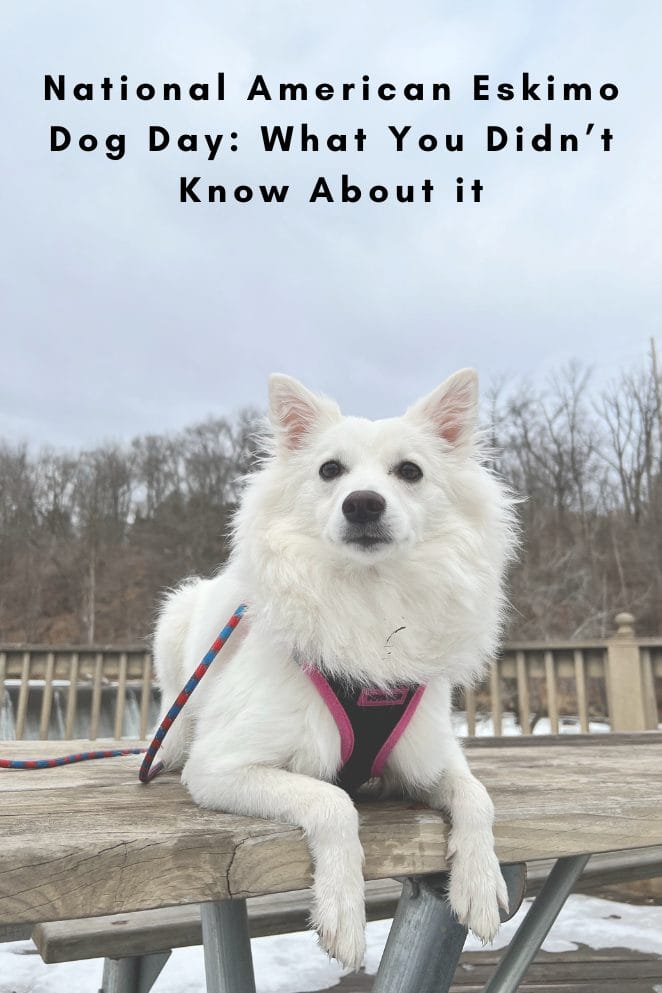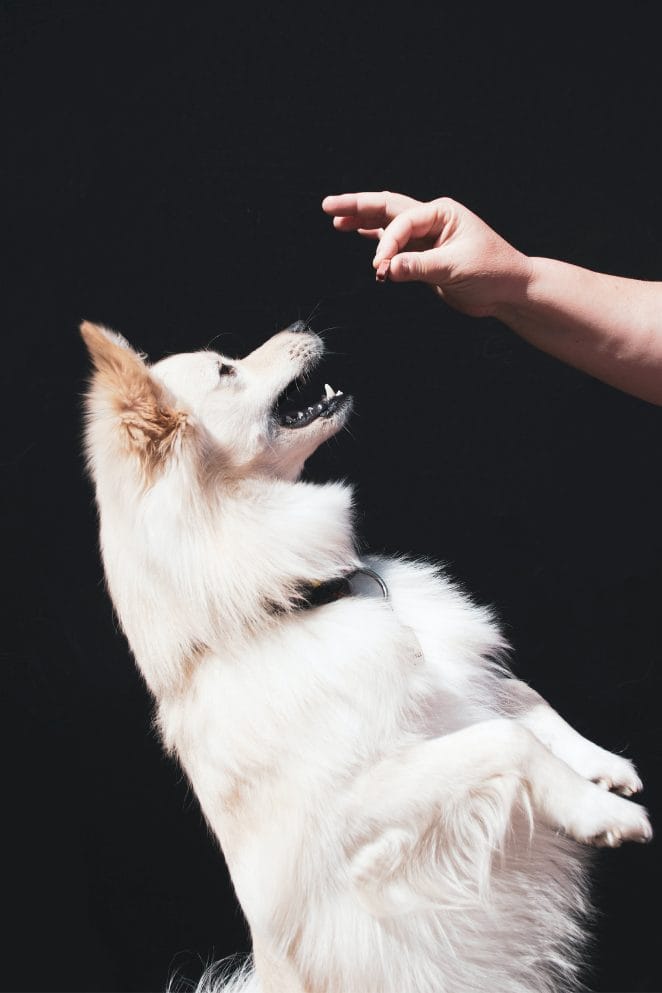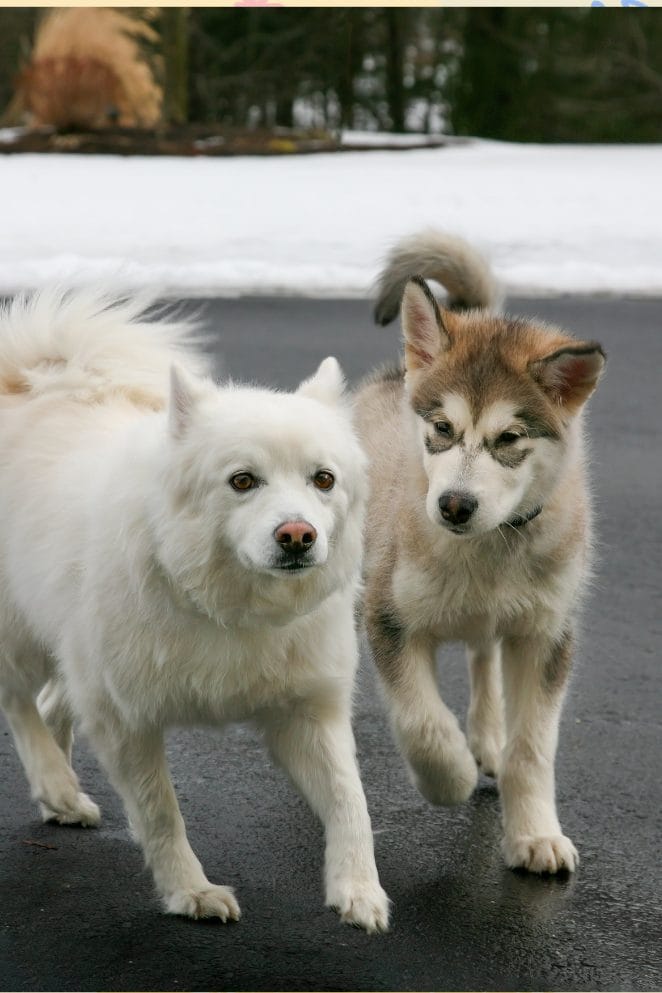
If you seek a spirited and exceptionally clever canine companion that bears a resemblance to the softest clouds, your affection will be swiftly captured by the American Eskimo dog.
National American Eskimo Dog Day is scheduled every year for January 15.
Commonly referred to as the Eskie, these delightful small dogs exhibit unwavering loyalty to their owners, rendering them an excellent choice for families.
Renowned for their exceptional trainability, Eskies rose to prominence in the late 1800s and early 1900s, captivating audiences with their remarkable agility stunts in traveling circus acts.
Brimming with energy, personality, and affection, these endearing companions effortlessly adapt to bustling households and thrive on being the focal point of attention.
About the Breed

The American Eskimo Dog effortlessly combines stunning aesthetics with a sharp and nimble intellect, presenting a harmonious blend of brains and beauty.
Neither reserved nor confrontational, Eskies maintain a perpetual state of alertness and friendliness, albeit with a touch of conservatism when encountering new acquaintances.
Noteworthy features encompass a dense, glistening white coat adorned with a mane-like ruff encircling the chest and shoulders, a beaming countenance accentuated by a black nose, lips, and eye rims that convey a perceptive and intelligent expression, and a plumed tail elegantly carried over the back.
Some Eskies boast markings with the delightful colour descriptor ‘biscuit cream.’ Their movements are characterized by a confident and agile gait.
As inherently social creatures, Eskies thrive on human interaction and may exhibit problematic behaviors if neglected or inadequately trained; they insist on being integral members of the family.
Ranking among the most trainable breeds, these clever and child-friendly companions practically epitomize the notion of being ‘eager to please.’
American Eskimo Dog Overview
| Pet Height | 9 to 19 inches |
| Pet Weight | 6 to 35 pounds |
| Playful With | Cats, children, dogs, families |
| Temperament | Friendly, gentle, outgoing, playful, protective |
| Shedding Amount | frequent |
| Exercise Needs | High |
| Energy Level | Active |
| Coat Length | Long |
| Colours | Cream, White |
| Patterns | Bicolour |
| Other Traits | Highly territorial, high potential for weight gain, strong loyalty inclinations, easy to train, apartment-friendly, grooming and training friendly, and inclined to chew. |
History of the American Eskimo Dog
The history of the American Eskimo dog, sometimes known as Eskie to his devoted followers, is lengthy and rich.
These dogs first arrived in the United States in the 19th century, despite being relatively new members of the American Kennel Club.
They were most likely descended from the German spitz, the white Pomeranian, the white Italian spitz, and the white keeshond.
They were frequently encountered with German immigrants. The American spitz was the name given to these dogs rather rapidly.
During the late 19th century and the early 20th century, American Eskimo Dogs gained popularity as stars in circuses and various entertainment acts, showcasing their impressive tricks.
The combination of their beautiful coat, alert expression, and remarkable trainability made them crowd-pleasers, capturing the hearts of audiences.
Families across the nation fell in love with these performing dogs, contributing to the breed’s surge in popularity.
In the early pedigrees, specific tricks performed by each dog were often highlighted, underscoring their intelligence and versatility.
By 1913, the United Kennel Club officially recognized the American Eskimo Dog as a distinct breed.
In 1970, the National American Eskimo Dog Association collaborated with the United Kennel Club to establish the official breed standard.
Subsequently, in 1985, the American Eskimo Dog Club of America was formed with the goal of securing American Kennel Club (AKC) recognition.
This objective was realized in 1995 when the breed achieved full recognition within the AKC, solidifying its status as a well-regarded and officially recognized breed.
American Eskimo: Know the Traits of this Beautiful Dog

Temperament and Personality
The Eskie is intelligent, amiable, and a skilled communicator.
He’s a great watchdog because of his vigilant demeanor, but watch out! He speaks a lot. Teach him early on that excessive barking is not acceptable.
An American Eskimo will use his glances and barks to communicate his desires to you.
A glance at the cookie jar, a glance at you, and a final glance back at the jar conveys an extremely obvious message.
You’ll be unconsciously giving him a treat while his dark eyes and happy features hypnotize you.
The majority of people that the Eskie encounters get along with him, but he isn’t always tolerant when kids give him tight squeezes.
Supervise interactions closely with young children and instruct them on how to carefully pet the Eskimos.
There should never be shyness or aggression in an American Eskimo.
If a puppy or his parents aren’t friendly, politely decline their offer.
Family Life
Are Children Safe Around American Eskimo Dogs? With kids, eskimos are courteous, kind, and full of enthusiasm for play.
Their extraordinary degree of energy keeps them running all day, but it can be too much for young toddlers, whose energetic bouncing could easily topple them.
American Eskimo Dogs and Other Pets: Are They Compatible?
American Eskimo Dogs get along well with other dogs quite a bit. Despite their friendliness, huskies have a tendency to chase smaller creatures.
Cats who are accustomed to dogs might be able to coexist with an Eskie, but amusing chase games are likely to occur whether the cat is interested or not.
Because of the Eskie’s strong prey drive, they are not the best match for rats or rabbits.
Protective
American Eskimo Dogs make excellent watchdogs because they are vigilant and will bark to alert you to the presence of friends, strangers, or wildlife.
They are amiable but cautious around strangers. Eskies aren’t good guard dogs, but they will alert you if someone stranger approaches.
Adopting a Dog from an American Eskimo Rescue or Shelter
If you’d want to adopt a dog from a breed rescue or animal shelter, you have a ton of fantastic possibilities. This is the way to get going.
Use the Web
You may quickly use websites to look for eskimos in your neighbourhood. Finding a dog can also be greatly aided by social media.
To allow your entire community to act as your eyes and ears, post on Facebook that you are looking for a particular breed.
Reach Out to Local Experts
Start discussing your wish for an Eskie with all of the local pet professionals. Vets, dog walkers, and groomers fall under this category.
When faced with the difficult choice of giving up a dog, people frequently turn to their circle of trusted friends and family for advice.
Talk to Breed Rescue
The majority of eskimos adore all eskimos. Breed clubs have rescue groups that are dedicated to caring for stray dogs because of this.
The American Eskimo Dog Club of America might be able to assist you in finding a rescue dog that will make the ideal family member through its network. T
o find additional local eskie rescues, you may also conduct an internet search.
Key Questions to Ask
Now that you know what to talk about with a breeder, there are other topics you should talk about with volunteers or staff at a shelter or rescue organization before you take a puppy home. Among them are:
- What is the extent of his energy?
- How does he behave with other animals?
- How does he react to children, guests, and shelter staff?
- What kind of personality does he have?
- What is the age of this person?
- Can he be housebroken?


GIPHY App Key not set. Please check settings